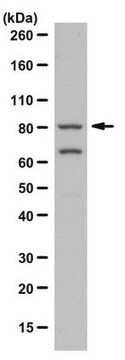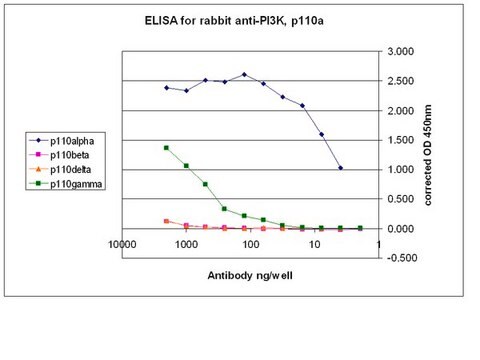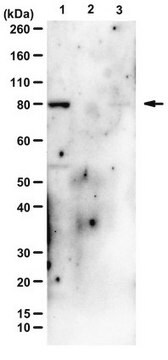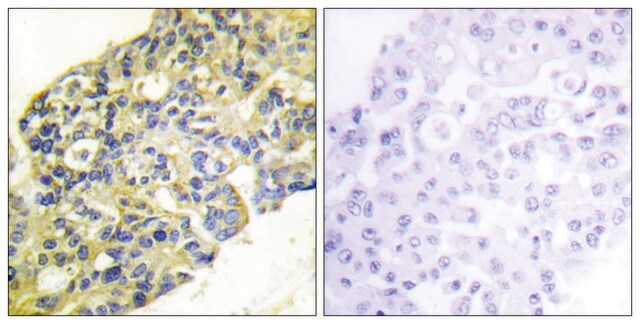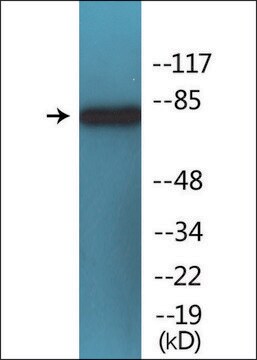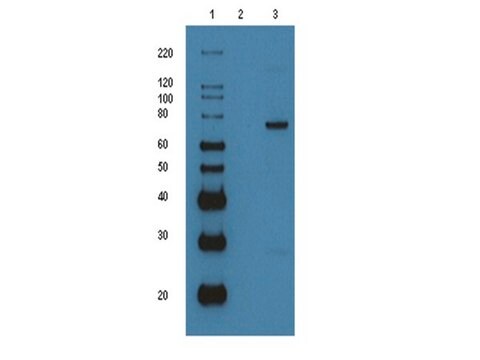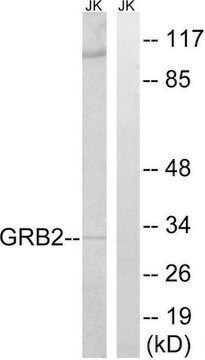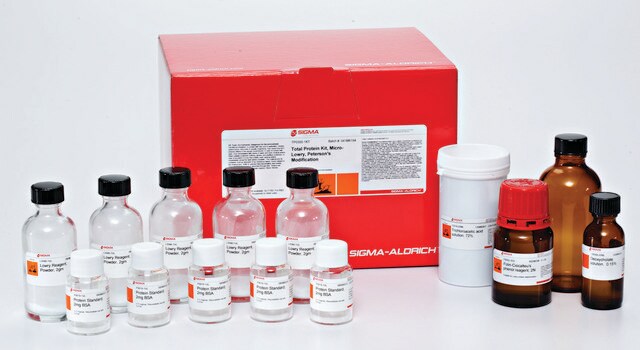05-212
Anti-PI3 Kinase Antibody, p85, N-SH3, clone AB6
clone AB6, Upstate®, from mouse
Sinônimo(s):
PI3-kinase p85 subunit alpha, PtdIns-3-kinase p85-alpha, phosphatidylinositol 3-kinase, regulatory subunit, polypeptide 1 (p85
alpha), phosphatidylinositol 3-kinase, regulatory, 1, phosphatidylinositol 3-kinase-associated p-85 alpha, phosphoinos
About This Item
Produtos recomendados
fonte biológica
mouse
Nível de qualidade
forma do anticorpo
purified antibody
tipo de produto de anticorpo
primary antibodies
clone
AB6, monoclonal
reatividade de espécies
human, rat, mouse
fabricante/nome comercial
Upstate®
técnica(s)
immunocytochemistry: suitable
immunoprecipitation (IP): suitable
western blot: suitable
Isotipo
IgG1κ
nº de adesão NCBI
nº de adesão UniProt
Condições de expedição
wet ice
modificação pós-traducional do alvo
unmodified
Informações sobre genes
human ... PIK3R1(5295)
Descrição geral
Especificidade
Imunogênio
Aplicação
10 µg/mL of a previous lot of this antibody was used in immunocytochemistry.
Immunoprecipitation:
4 µg of a previous lot immunoprecipitated PI3 Kinase from 500 µg of an A431 RIPA lysate, as confirmed by immunoblot using a polyclonal PI3 Kinase antibody (Catalog # 06-195).
Signaling
PI3K, Akt, & mTOR Signaling
Kinases & Phosphatases
Qualidade
Western Blot Analysis:
0.5-2 µg/mL of this lot detected PI3 Kinase in RIPA lysates from human A431 cells; previous lots detected PI3 Kinase in RIPA lysates from rat L6 myoblasts.
Descrição-alvo
Ligação
forma física
Armazenamento e estabilidade
Handling Recommendations:
Upon receipt, and prior to removing the cap, centrifuge the vial and gently mix the solution. Aliquot into microcentrifuge tubes and store at -20ºC. Avoid repeated freeze/thaw cycles, which may damage IgG and affect product performance. Note: Variability in freezer temperatures below -20ºC may cause glycerol-containing solutions to become frozen during storage.
Nota de análise
Positive Antigen Control: Catalog #12-301, non-stimulated A431 cell lysate. Add 2.5µL of 2-mercaptoethanol/100µL of lysate and boil for 5 minutes to reduce the preparation. Load 20µg of reduced lysate per lane for minigels.
Outras notas
Informações legais
Exoneração de responsabilidade
Não está encontrando o produto certo?
Experimente o nosso Ferramenta de seleção de produtos.
Código de classe de armazenamento
12 - Non Combustible Liquids
Classe de risco de água (WGK)
WGK 2
Ponto de fulgor (°F)
Not applicable
Ponto de fulgor (°C)
Not applicable
Certificados de análise (COA)
Busque Certificados de análise (COA) digitando o Número do Lote do produto. Os números de lote e remessa podem ser encontrados no rótulo de um produto após a palavra “Lot” ou “Batch”.
Já possui este produto?
Encontre a documentação dos produtos que você adquiriu recentemente na biblioteca de documentos.
Nossa equipe de cientistas tem experiência em todas as áreas de pesquisa, incluindo Life Sciences, ciência de materiais, síntese química, cromatografia, química analítica e muitas outras.
Entre em contato com a assistência técnica